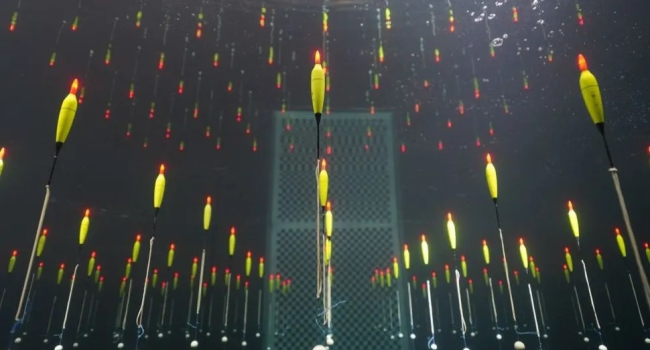China builds world's largest underwater telescope: What do scientists hope to study with it?
I n an ambitious quest to unlock the mysteries of the universe, scientists in China are constructing the world's largest underwater "ghost particle" detector, TRIDENT (Tropical Deep-sea Neutrino Telescope), with the aim of exploring the enigmatic behavior of elusive neutrinos. Positioned 11,500 feet (3,500 meters) beneath the ocean's surface in the Western Pacific Ocean, this colossal project, also known as "Ocean Bell" in Chinese, is slated for completion in 2030.
n an ambitious quest to unlock the mysteries of the universe, scientists in China are constructing the world's largest underwater "ghost particle" detector, TRIDENT (Tropical Deep-sea Neutrino Telescope), with the aim of exploring the enigmatic behavior of elusive neutrinos. Positioned 11,500 feet (3,500 meters) beneath the ocean's surface in the Western Pacific Ocean, this colossal project, also known as "Ocean Bell" in Chinese, is slated for completion in 2030.
Neutrinos, often referred to as "ghost particles," possess peculiar properties, including their negligible mass and negligible interaction with other forms of matter due to their lack of electrical charge. TRIDENT seeks to capture rare light emissions produced by neutrinos as they briefly manifest in the ocean's depths. With an intricate network of over 24,000 optical sensors distributed across 1,211 2,300-foot-long strings, the detector will form a Penrose tiling pattern, spanning a diameter of 2.5 miles (4 kilometers) and scanning an extensive volume of 1.7 cubic miles (7.5 cubic kilometers) for neutrino activity.
Projected to be significantly more sensitive than the current largest neutrino detector, IceCube, situated in Antarctica, TRIDENT aims to capitalize on its strategic equatorial location, enabling all-sky observation without any blind spots. The detector's strategic placement beneath an expansive body of water enhances the likelihood of capturing ghost particle interactions, allowing scientists to trace the origins of these enigmatic particles from ancient cosmic events.
"Using Earth as a shield, TRIDENT will detect neutrinos penetrating from the opposite side of the planet," emphasized Xu Donglian, the project's lead scientist, underscoring the significance of the telescope's global vantage point.
By leveraging the flashes of light generated by neutrinos as they interact with water molecules during their passage through the ocean, scientists anticipate gaining insights into the energy and potential sources of these elusive particles, offering a unique perspective on cataclysmic stellar phenomena and celestial collisions.
The researchers' recent publication in Nature Astronomy highlighted TRIDENT's mission to transcend the boundaries of neutrino telescope capabilities, heralding a new era of heightened sensitivity in the exploration of astrophysical neutrino sources. With its ambitious goals and cutting-edge technology, TRIDENT represents a pioneering initiative poised to unveil the hidden dynamics of neutrinos and broaden our understanding of the universe's fundamental building blocks.